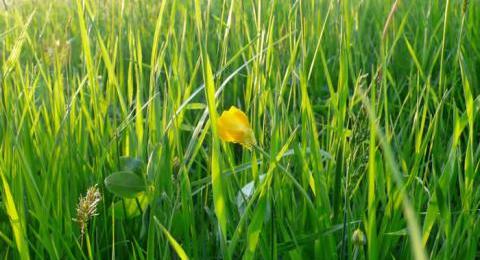
Grassland habitats are an increasingly rare site in New Hampshire, but more than 70 species of wildlife use these open areas of fields and wildflowers to meet their needs for food, cover, or breeding. The most common grassland habitats in New Hampshire are agricultural fields such as hayfields, pastures and fallow fields.
Grassland vegetation consists of a mixture of grass species, or a combination of grasses, sedges and wildflowers. The vegetation may be tall (over four feet), short (less than 6 inches), or a combination. If left alone, these habitats will grow back into shrubs and small trees, reverting eventually to forest. If it's appropriate for your land, managing grassland habitats will greatly benefit the wildlife in your area.
Size matters
Even small grassy open areas can provide valuable habitat for wildlife. Small fields and open areas, less than 5 acres in size, are likely benefitting wildlife species that are already on your property. Grasslands larger than 5 acres start to attract new species to your property. Many grassland bird species will only nest in grasslands of a certain size.
Where you least expect...
Airports, capped landfills, military installations, and wet meadows may also function as grassland wildlife habitat if they support similar vegetation. Croplands are also used by many grassland wildlife species, and are also important as potential grasslands, since they may be easily converted to grow grass if crop farming practices are abandoned.
More Information
You can find additional information in Managing Grasslands, Shrublands and Young Forest Habitats for Wildlife: A Guide for the Northeast, a publication from NH Fish and Game and UNH Cooperative Extension.

